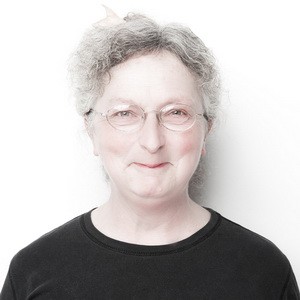The Royal Treatment
Colleen WilsonTextile Conservator
Why did you want to become a textile conservator?
I like to work with my hands. I like old things because they bring to mind stories of who used them in the past. I have sewn since I was eight years old and like the connection to other sewers through close examination of their work. Textiles are literally the fabric of our lives and the fabrics of the lives of people who have lived in other times and places.
How did you become a textile conservator?
I have a degree in history in art and did two years of postgraduate training at the Textile Conservation Centre at Hampton Court Palace in England. Conservation is a field where History, Science and Fine Arts intersect; a detective’s interest in physical clues, a chemist’s willingness to analyse and experiment and an artist’s eye for detail are all assets.
What does a textiles conservator do?
Conservators try to ensure that the physical evidence of the past is preserved. It’s one thing to read about the way people lived – seeing the tools they used, their toys and clothes is also informative. Artifacts are historical documents of a different kind, they communicate information that is not always written down. Although sometimes we work directly on artifacts such as the McInnes uniform, we also build mounts to support unusual shapes, we devise means to prevent careless handling and to filter light, moisture and dust, as all of those things can shorten the life of an artifact.
What interests you most and what did you learn from working on the Lieutenant-Governor McInnes uniform?
I love to solve a puzzle – to reassemble something that had gotten mixed up. I really appreciate being able to handle something that was made by really skilled people – the embroidery and sewing are precise and effective, a real inspiration to someone who likes to sew and embroider. And I learned to dye and curl feathers, something I hadn’t done before.
Stories by or about this person
Royal BC Museum Conservator, Colleen Wilson, tells the story of the conservation of Lieutenant-Governor McInnes’ uniform with these photographs. (Scroll to the bottom for this photo gallery).
Curator of History, Dr Lorne Hammond and Textile Conservator, Colleen Wilson, write about the mystery of Lieutenant-Governor Robert McInnes’s uniform.
Dr. Lorne HammondCurator of History (Retired)
Why did you want to become a historian?
When I was young we lived and vacationed among a mix of Etruscan, Roman and Renaissance sites and World War II battlefields in Germany and Italy. Right from the start history was about people, museums and art galleries, objects, books and physical landscapes. And I had great teachers.
How did you become a curator?
I moved from academic classrooms to the museum when my wife Monica spotted an interesting history job and I applied. They liked my mix of skills. I was very fortunate to be mentored by a deeply experienced staff and was immediately thrown into the busy world of collections, exhibits and work with the public.
How would you describe a typical day at work?
I was told when I was hired “you will never be bored”. That is still true. A day is a mix of public inquiries, email research questions, collections work, media requests, mentoring interns and work with docents on collections or public education training. A constant is the team work on projects across a wide variety of departments. No two days are exactly the same.
Stories by or about this person
Royal BC Museum Curator of History, Dr Lorne Hammond, reveals the back story on Sir Francis Stillman Barnard, the 10th Lieutenant-Governor of British Columbia and his influential family.
Dr Lorne Hammond and Colleen Wilson write about the mystery of Lieutenant-Governor McInnes’s uniform.
Frederike VerspoorArchivist (Retired)
Why did you want to become an archivist?
While studying history at university, I did research using original records at an archives in Amsterdam. Working at an archives seemed a perfect fit for my interest in history, my passion for research and my desire to preserve and provide access to the records which form the basis for historical research.
How did you become an archivist?
After obtaining master’s degrees in history and library science and working for several years as a librarian in research libraries, chance and circumstance finally provided the opportunity to work as an archivist.
What do you do as archivist?
I describe records, create research guides, provide reference and research assistance, and participate in public programs such as Archives Boot Camp and This Week in History. I also work on the genealogy database.




